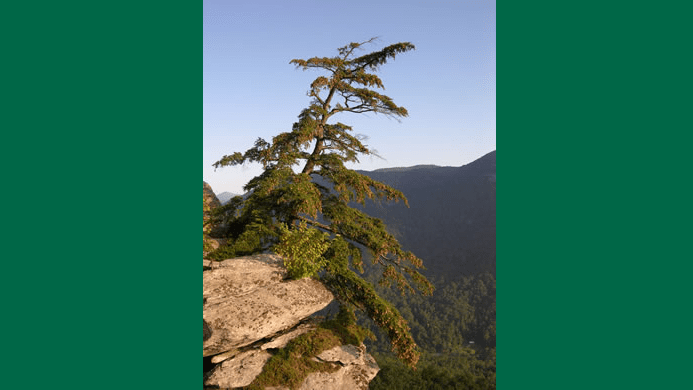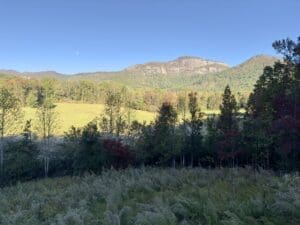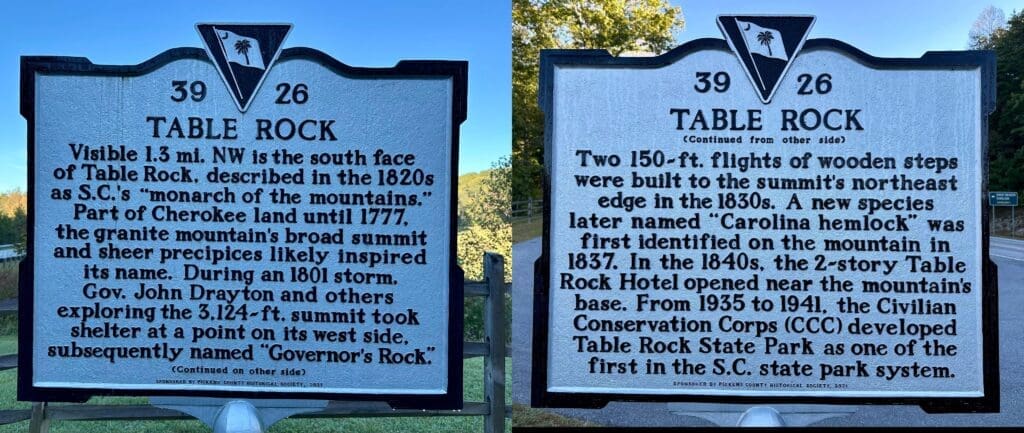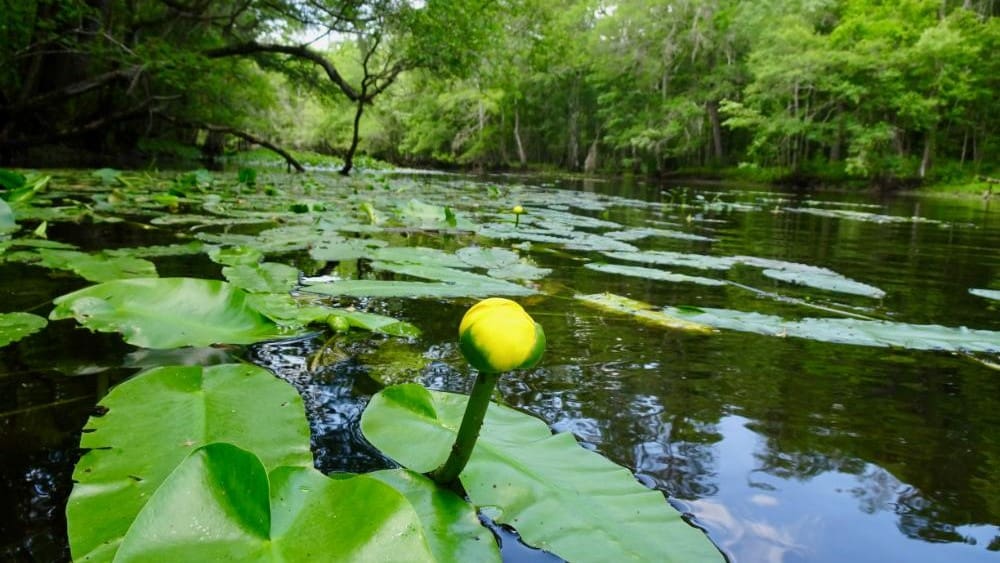by Dr. Jon Storm
If you attended the SC Native Plant Society Symposium last fall, you may have stopped along Scenic Highway 11 at Grant Meadow. This popular roadside attraction offers a beautiful view of Table Rock, but it also holds a little-known piece of South Carolina’s botanical history. While many visitors admire the scenery, few take the time to read the historical marker—and even fewer turn to the back of the sign.
But those who do will find an intriguing claim: the Carolina Hemlock (Tsuga caroliniana) was first discovered on Table Rock in 1837!
The story goes that this new tree was found by Professor Lewis Gibbes of the College of Charleston. A compelling tale—but is it true? The historical record is murky. Conflicting accounts suggest that Gibbes may not have been the first to collect Carolina Hemlock, and the timeline of its discovery is uncertain. Some evidence points to Gibbes collecting his specimen as late as 1850. In 1856, he sent a sample to Harvard botanist Asa Gray, asking if it was a new species. But Gray had already collected Carolina Hemlock in the mountains of Western North Carolina in July of 1841.
And yes, this is the same Asa Gray known for his role in the search for the elusive Oconee bell (Shortia galacifolia).
Carolina Hemlock was formally described as a new species in 1881 by George Engelmann, a St. Louis-based physician and botanist who documented many plants of the American West. In the Carolinas, Engelmann’s name also lives on in plants like Engelmann’s Quillwort (Isoetes engelmannii) and Engelmann’s Hawthorn (Crataegus berberifolia var. engelmannii).
Distinct from the more familiar Eastern Hemlock (T. canadensis), Carolina Hemlock prefers dry, rocky habitats in the Southern Appalachians, ranging from Virginia to South Carolina. It grows to a more modest height (40–60 feet) and has needles that emerge in multiple directions around the branches, giving it a denser appearance. Sadly, like its Eastern Hemlock cousin, it is highly vulnerable to the invasive Hemlock Woolly Adelgid (Adelges tsugae), which continues to threaten its survival.
So, was Table Rock truly the site of the first Carolina Hemlock discovery? The answer remains uncertain. But one thing is clear—this fascinating tree has deep roots in South Carolina’s botanical history.
See the links in the comments to learn more about Lewis Gibbes, Asa Gray, and the tangled tale of Carolina Hemlock’s discovery.
Additional information:
Lewis Gibbes and his botanical discoveries
Asa Gray and the Oconee Bell mystery
Carolina Hemlock species description by George Engelmann, 1881






